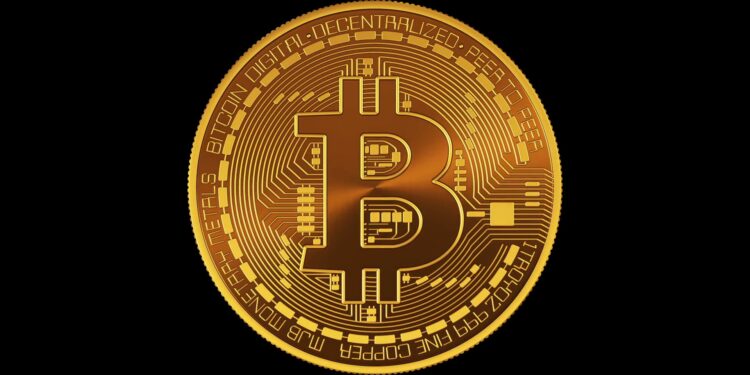Welcome to your first glance at the Bitcoin network and the marvels of its underlying blockchain technology. You could be new to crypto, but you must admit that you have seen the Bitcoin logo online or as a painting on a t-shirt or graffiti in your local streets. Bitcoin has grown in popularity so much that even boomers and the gen x are hopping on the bandwagon. It’s no surprise most people are seeking guides of Bitcoin for dummies to get a better understanding on the first cryptocurrency in the CoinMarketCap.
As a Bitcoin newbie, first, you should know that it was launched in 2009 by the pseudonymous creator, Satoshi Nakamoto. His timely launch has been a cause of many FUD discussions on whether the 2008 recession was the reason or if he was genuinely irked by the traditional financial system and wanted to fix it. Either way, Bitcoin, the first ever cryptocurrency network has presented unfathomable benefits to the financial sector.
Sure, you must have heard all sorts of theories about Bitcoin and the blockchain. Some statements could be true, but some might be misguided. If you want clarity on the topic, read on to get full insight into the Bitcoin network and the cryptocurrency properties.
Bitcoin Technology
Speed
Bitcoin’s speed is estimated by the amount of time required for a transaction to be confirmed on its network – the blockchain. Bitcoin has a fairly average transaction speed that takes anywhere between 10 minutes to 1 hour. The cryptocurrency network has transaction speeds which vary widely depending on hashrate, total network activity, and mining fees.
It is worth knowing that Bitcoin also has a zero-confirmation transaction which occurs when merchants accept payments as soon as the transaction is broadcasted to the network and can take as little as five or ten seconds. However, zero-confirmation transactions are insecure and can make merchants vulnerable to double-spending attacks. Overall, implementing the lightning network is projected to improve Bitcoin’s blockchain throughput to confirm 3-7 transactions in 10 minutes.
Cost
Transaction cost is a fee that the initiator of the transaction offers as an incentive to the network to settle the process quickly. The cost of transactions on the Bitcoin network is never constant as it follows the law of supply and demand. When the demand curve goes down, prices fall, and if the demand rises, then Bitcoin transaction fees hike. Usually, unconfirmed transactions are waiting in the mempool to be cleared. However, transactions stuck in the mempool for too long incur lower transaction fees. These logistics create a rife between supply and demand on the Bitcoin network, thus determining the transaction fees. In April 2022, Bitcoin’s recorded an average transaction fee of $1.039, which was the lowest in two years since June 2020.
Scalability and Network Density
Scalability refers to the ability of the blockchain to support the increasing number of transactions and onboarding more nodes on the network. Despite Bitcoin’s economic pleasantries, it seems Satoshi didn’t account for the abrupt growth of the network. Nonetheless, enthusiastic developers have been able to join the network and invent solutions, the lightning network, that improve Bitcoin’s blockchain.
The lightning network structure has significantly enhanced Bitcoin’s scalability with a capability of handling seven transactions per second (7 TPS). Even so, Bitcoin is still not scalable enough for seamless real-life usage. Although Bitcoin devs have implemented an on-chain scaling solution, i.e., SEGWIT, to enhance scalability, the network is still not sustainable since it doesn’t reduce the confirmation time.
Reliability
As the flagship crypto, the Bitcoin network has never had downtime in the 12+ years since its launch. It’s a distributed peer-to-peer network where nodes participate in running the network without loss or alteration in data. However, its reliability is limited by various issues, including high and unpredictable transaction fees and long and unpredictable transaction confirmation time – all amounting to scalability problems.
Environmental Impact
Bitcoin network operates on Proof of Work (PoW) consensus, which utilizes a sheer amount of electricity to confirm transactions and add them to the blocks during mining. Moreover, Bitcoin impacts the environment enormously as its mining activities generate excessive greenhouse gas emissions.
Bitcoin mining produces an estimated 40 billion pounds of carbon emissions in the U.S alone. Globally, Bitcoin’s enormous power consumption has a dire environmental impact and is projected to contribute to climate change. Compared to the traditional financial system, it is still unclear which alternative (digital or fiat currency) harms the environment.
Decentralization
Satoshi Nakamoto built Bitcoin with the concept of decentralization, a network with no central authority, in mind. However, the mass adoption of the coin has introduced mining pools and big motivated players with substantial mining resources to control mining activities which somehow affects the price of bitcoins.
Putting everything into perspective, you will notice that Bitcoin’s centralization hit its highest levels in 2020 following the halving of mining rewards that pushed out smaller miners. Research shows that just two mining pools, i.e., F2Pool and AntPool, control over 52% of Bitcoin’s hash rate, with the top 1% of Bitcoin holders owning 27% of BTC supply. The statistics show that the world’s first cryptocurrency by market cap has aspects that is controlled by a central authority.
Security
Reorg, 51% & Brute Force Attack
Bitcoin’s rising levels of centralization make it susceptible to 51% attacks. The mining pools which control more than half of Bitcoin’s hash power can launch the attacks by censoring transactions and performing double-spends. A brute force attack is also possible on Bitcoin wallets by using a wallet DAT file and a hash extractor to convert the file into a format that a password cracker can read. However, Reorg and 51% attacks are highly unlikely on Bitcoin, considering that carrying out such an attack is very costly in the region of $21million per day and is disadvantaged by mining pools that comprise multitudes of individuals and Bitcoin maximalists who believe in the cause and impossible to synchronize such an attack.
Potential for Being Banned
Basically, Bitcoin is the pioneer crypto of all digital currencies. And as aforementioned, its network has never broken down, signalling a stable currency in the history of the financial sector. That being said, among the core reasons for the Bitcoin ban is its potential to replace the government-backed financial system, threatening the state’s economy.
Consequentially to its environmental implications, some governments have used this narrative to impose sanctions on it. So far, only a handful of countries have banned Bitcoin, i.e., India, Iran, Colombia, China, Bolivia, Egypt, and Indonesia, to name a few. If you are a stickler to reason, you will find that there are no solid grounds for the ban of Bitcoin in these countries.

On the contrary, some countries like El Salvador have assessed the economic significance of Bitcoin and decided to make it a legal tender. Surprisingly, more countries are following suit.
Network Vulnerabilities
Currently, the mercy of Bitcoin’s network not to experience reorg 51% attack is the diversity of the members in its ecosystem (mining pools % whales). Also, while the need to speed up the network arises, upgrades such as the lightning network have been evaluated and known to pose security vulnerabilities that could render the network susceptible to Griefing attack, Flood and loot time-dilation eclipse, and pinning. Here’s the entire list of Bitcoin vulnerabilities.
Bitcoin Use Cases
Initial Main Use Case
Bitcoin was initially created to purposely function as an electronic peer-to-peer (P2P) currency to replace fiat (traditional currency) controlled by the banks. So far, Bitcoin seems to have achieved its intended use case by demonstrating attributes of an electronic currency that hold an underlying value and can be used as a medium of exchange.
Mainnet Live
Launched in 2009, Bitcoin has been alive with substantial value growth. The Bitcoin Network has undergone significant upgrades to solve several issues such as security and scalability. Most importantly, there is no time that the network has ever crashed!
Additional Use Cases
Apart from being a peer-to-peer electronic currency, some investors perceive Bitcoin as a store of value. Bitcoin attains its value from its scarcity and the marginal cost of production. Research has shown that the market price of Bitcoin tends to follow the cost of mining. Bitcoin can also be considered an investment asset, just like Gold, Stocks, and Real Estate.
Additional Working Products
Bitcoin’s renowned product is the Lightning Network which was developed as a second layer added to Bitcoin’s network to enable transactions to be done off the blockchain to enhance scalability. The Lightning Network operates by speeding up transaction processing times and decreasing the associated costs of Bitcoin’s blockchain. The other product on Bitcoin Network is Segregated Witness (SegWit) protocol developed to enhance Bitcoin’s scalability.
Core Team, Partnerships & Developers
Core Team & Developers
Bitcoin was created by Satoshi Nakamoto, who, up to date, remains anonymous. While several people have come out claiming to be Satoshi Nakamoto, it’s yet to be confirmed who the real creator of Bitcoin is. The Bitcoin Core team is currently led by Wladimir J. Van Der Laan, who has held the position since 2016. Van Der Laan is a developer with a master’s degree and a doctorate in Computer Science, GPU, and graphics. Bitcoin is decentralized and has a team of 18 000 active developers.
Partnership
Due to the pseudonymity of Bitcoin’s founder, it’s hard to tell who has partnered with him/her/them. However, notable developers have contributed to building/improving the network. In addition, platforms such as Square Crypto, Chaincode, Blockstream, MIT DCI, Gemini, and Hardcore Fund, among others, have been right up the alley to revamp the core development of Bitcoin.
How to Mine Bitcoin for Dummies
After familiarizing yourself with the wonders of Bitcoin technology, the first thought that ricochet in most Bitcoin newbies is how fast is it to mine one Bitcoin. Well, it takes approximately 10 mins to mine 1 BTC. However, this time varies depending on the miners (hardware) you use and the rate of mining difficulty during that time.
All jokes aside, you should know that Bitcoin mining is a competitive endeavour. To get rewards, you’ll need to secure a powerful computer stronger than other computers worldwide to solve complex math puzzles. There are only 21 million Bitcoins available to be mined. Currently, 19 million plus have been mined already, leaving less than two million coins for miners to scramble over. Regardless, millions of folks are working tirelessly to mine Bitcoins. So just like any other industry, the big players try to outcompete the smaller ones. As a result, the cost of securing computing power increases every year.
In order to mine Bitcoins, you’ll need the best computer hardware. Several types of cryptocurrency mining machines are used, ranging from desktop PCs to large server farms. You can also rent your computer resources to miners looking for a place to run their code.
Mining is done by running software on specialized computers known as ASICs (application-specific integrated circuits), originally developed for high-performance computing power and thus effective for Bitcoin mining.
Here’s a step-by-step guide to getting started mining Bitcoins:
Choose a Mining Pool
Choosing a pool is like joining a community of miners. Each pool has its own rules and policies, so choose carefully. Some pools charge fees for membership, others require a minimum amount of hash power, and others allow members to contribute directly to the pool’s earnings. Before choosing a pool, make sure you understand all of the terms and conditions.
Buy Hardware
Once you’ve chosen a pool, you’ll need to buy some hardware. Depending on the machine you buy, you may need additional components, such as graphics processing units (GPUs) or application-specific integrated circuits (ASICs).
Install Software
Next, download and install the appropriate software. For Windows users, Bitminter recommends downloading and installing the latest version of the open source cgminer software. For Mac OS X users, we recommend downloading the latest version of CGMiner. After ticking all the steps, you’re ready to start mining!
Winding Up
Bitcoin users are responsible for controlling the network. These users include developers who cannot enforce a change on the network because of the blockchain’s protocol. Bitcoin’s proof of work (PoW) consensus has been under scrutiny because of its environmental implications. Still, because of this mechanism, the Bitcoin network has managed to be up and running to this time and why proof of stake (PoS) networks are struggling to dictate dominance in the crypto space. Despite its shortcomings, let’s not forget the flagship crypto that laid the foundation for altcoins to thrive.
Frequently Asked Questions
What is Blockchain Analysis?
Blockchain analysis is the process of analyzing, detecting, grouping, modeling, and visually portraying data on a blockchain, a cryptographic distributed-ledger.
The purpose of blockchain analysis is to determine meaningful information about the many actors involved in cryptocurrency transactions. Private companies frequently do analysis of public blockchains such as Bitcoin and Ethereum.
What is Bitcoin Mining?
Bitcoin mining is both the activity of confirming transactions made to the Bitcoin virtual currency system and the process through which new Bitcoin enters the market for circulation.
Bitcoin mining is used to record current Bitcoin transactions in blocks that are then added to a blockchain, which is a record of past transactions.
Bitcoin miners utilize software to solve transaction-related procedures that verify bitcoin transactions. Miners in return are compensated with a predetermined number of bitcoins per block.
What is Proof of work?
Proof of work (PoW) is a type of cryptography verification whereby a party (the prover) demonstrates to others (the validators) that a specific amount of computational work has been invested. Validators can then confirm this expense with little effort on their behalf.
The goal of proof-of-work algorithms is not to prove that specific work was done or that a computational issue was “solved,” but to discourage data manipulation by imposing high energy and hardware-control requirements.
What is a Blockchain Explorer?
A software program that displays blocks, transactions, and blockchain network analytics (e.g., average transaction costs, hashrates, block size, block difficulty).
Client inputs are searchable terms on the explorer that are then sorted through an orderly table on the database. The explorer will have already arranged blockchain data into table format.
A blockchain explorer allows most people to browse and examine data about recently mined blocks or recently completed transactions on a blockchain. They should ideally let you see a live feed of blocks as they are mined, as well as the data associated with the blocks.
What is Hashing Power?
Hash power, also known as hashing power, is the ability of your computer or hardware to perform and solve various hashing procedures. It is quantified in hash/second units, which indicate how many calculations may be completed per second. High hash power machines are extremely efficient and can handle a large amount of data in a single second.
These procedures are used to create new cryptocurrencies as well as to allow transactions amongst them. This is also known as mining. Buyers on Hash Power Marketplace pay in Bitcoins to rent hashing power.

What Is Bitcoin Used For?
Bitcoin was established to facilitate the transfer of funds via the internet. The purpose of the digital currency was to establish an alternate payment system that would run independently of a central authority but would otherwise function similarly to traditional currencies.
What Is the Bitcoin Lightning Network?
The Lightning Network is a secondary layer of the Bitcoin blockchain that enables users to construct off-chain payment channels that retain the blockchain’s security and decentralization. This is referred to as an off-chain transaction.
How Does the Bitcoin Blockchain Work?
The blockchain is a public record that stores Bitcoin transactions. Because Bitcoin is composed of data inputs and outputs, they are dispersed throughout the blockchain in fragments due to their use in prior transactions. Your wallet application locates all of them, totals them, and shows the total amount.
How Are Bitcoin and Blockchain Connected?
Blockchain is the technology that underpins Bitcoin, and it was designed with Bitcoin in mind. Bitcoin was the first application of the blockchain, and without the blockchain, there would be no Bitcoin. Because of this, the two terms are frequently used interchangeably.























